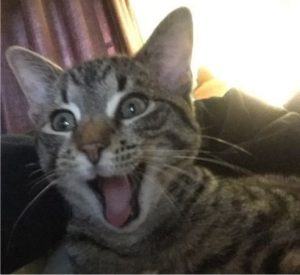The ceremony was held on the grounds of the Peralta house — a small, two room, adobe building with handcrafted furniture which was built by one of the Indian families about 20 years after the initial settlement in 1777. It ended up belonging to Peralta, who lived in it until he died, and is the last remaining adobe building from the original pueblo. What astonished me is it belonged to a couple (the Peraltas) who ended up having 17 children! Clearly, as was noted by the docents, life occurred outside the house.
This was particularly amusing in contrast to the Fallon house across the street — which was a 14-room Victorian mansion filled with imported furniture and decorations! While the Fallon house was built a generation or so after the Peralta house, both houses were lived in at the same time, which rather pointed up the social differences of the time. Thomas Fallon was an Irish-born, Canadian-raised soldier and “adventurer” who appears to have married “above his station” — his wife was Carmel Cota Lodge Fallon, a member of the Castro family. He ended up being “respectable” and becoming one of the mayors of San José, but his arrival was as a soldier in Fremont’s train.
Fallon “conquered” the San José area for the US by the simple expedient of returning later with 19 men, writing the closest American outpost to ask for six guns and ammunition so as to take the area successfully, then taking down the Mexican flag flying over the pueblo and putting up an American one. The locals apparently found this interesting but not particularly relevant, so when Fallon left shortly thereafter (to pick up the guns?), they simply quietly took the flag down. He put it back up when he returned, of course.
I found the story rather bleakly amusing on the whole, since it effectively recapitulated what had happened to the local Ohlone Indians previously, when Peralta first came: the Ohlone welcomed the new arrivals courteously, but suffered significant territorial, cultural, and population losses soon thereafter due to the new settlers’ diseases and cultural habits. The Mexican population seems to have been a bit less welcoming overall to the Americans (perhaps due to the large numbers of “undesirables” which arrived with the Americans during the Gold Rush) but that didn’t stop the Americans from moving in, taking over, and importing all their then-current prejudices and bigotries.
I had to laugh wryly at realizing many of the settlements based on the old European countries and civilizations (for example, this Spanish-Mexican one in San José, the French New Orleanians, and a few others I’ve read about over the years) all seem unanimous in describing the invading Americans as “undesirables.” How barbaric the brash, outspoken, rude new American men must have seemed to the more genteel, settled local families and communities!
The Peralta Adobe – Fallon House Historic Site is near San Pedro Square, and we’ll have to return later for the tours. It was clear the crowd was much, much larger than expected today, as they had to break each tour up into three or four groups. The docents seemed startled but pleased at how many were there — I would guess they’re lucky if they have a tenth that many on ordinary days — and I and my companions decided to make life a little easier for them by returning on another weekend. It was a nice little ceremony, though, and I’ve been having fun slowly exploring the various historic parts of San José on my few free weekends.
Peralta Adobe-Fallon House Historic Site
175 W. St. John Street, San Jose 95110
If you’re in the area, go check them out — and if you can, make a donation! I’m sure they’d love to see you, and it’s clear they can use all the volunteer help they can get. You can also find out more fun things happening in San José — that aren’t swamped by hundreds of people already — by checking out History San José: Silicon Valley from A to Z. It’s how I found out about this nice little event. Enjoy! :)

